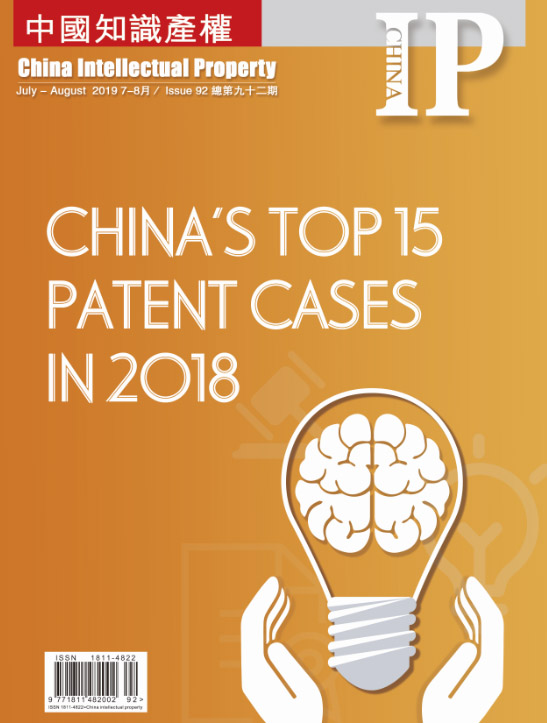
Yan Kun
Senior Engineer, the China Academy of Information and Communication Technology
In order to promote the rapid development of Internet of Things technologies and applications, the standard organization 3rd Generation Partnership Project (3GPP) has introduced cellular communication standards-based NB-IoT, eMTC and LTEV2X technologies. This article analyzes enterprises' IPRs in the LTE Internet of Things from the perspective of 3GPP contributions and ETSI declared patents.
Preface Internet of Things (IoT) represents another revolutionary development of the information industry following computers, the Internet and mobile communications, and features a long industrial chain, a large number of industrial clusters involved and a wide range of applications.
Under the general trend of the "Internet of Everything", IoT, as an emerging application sector in the communication industry, has an increasing market size and possesses a tremendous commercial value. As forecasted by Gartner, in 2020, the number of IoT devices will reach 26 billion, and the size of the IoT industry will reach USD 1.9 trillion worldwide.
In order to promote the rapid development of Internet of Things technologies and applications, the standard organization 3rd Generation Partnership Project (3GPP) has introduced cellular communication standards-based NBIoT, eMTC and LTE-V2X technologies. This article analyzes enterprises' IPRs in the LTE Internet of Things from the perspective of 3GPP contributions and ETSI declared patents.
Analysis of NB -IoT/eMTC/V2X contributions and declared patents
1.NB-IoT
NB-IoT refers to Narrow Band Internet of Things and is an important branch of Internet of Everything.
In the 62nd Meeting for GERAN (GERAN #62) in 2014, 3GPP initiated the NB-IoT Study Item, which mainly targets technological evolution and direction of cellular networks oriented towards IoT terminals.
In September 2015, 3GPP initiated the LTE-based NB-IoT Work Item in the 69th Plenary Meeting for RAN (RAN #69) and completed the Rel-13 version in June 2016. In the RAN #72 in June 2016, it initiated Rel-14 NB-IoT to enhance the Rel-13 version whilst maintaining the low cost, low complexity, capacity and coverage at the same level.
From the perspective of the distribution of NBIoT contributions, as of September 2018, companies submitted a total of 11,697 contributions to 3GPP.
TSG RAN received 8,690 NB-IoT contributions, ranking No.1, followed by TSGs SA (1,829) and CT (1,160). Of TSG RAN, RAN1, RAN2 and RAN4 received the most contributions as they had the most participating companies; of SA TSG, SA2 received the most contributions; and TSG CT's research work was mainly undertaken by CT1 and CT4.
NB-IoT contributions consist mainly of Discussion Papers and Change Requests, accounting for 42% and 39% of the total respectively, while the share of other type contributions is 19%.
A total of 93 companies participated in the definition of NB-IoT standards. The Top 10 companies by the number of NB-IoT contributions submitted were world-renowned infrastructure, chip and terminal manufacturers. NB-IoT contributions submitted by the Top 10 companies accounted for 83% of the total. Huawei, Ericsson and Nokia were most highly involved in the definition of NBIoT standards, all of which submitted more than 2,000 contributions, with Huawei ranking the first given 2,508 contributions submitted. Other Top 10 companies were Qualcomm, ZTE, Intel, LG, Samsung, MediaTek and CATT in turn.

Figure 1 Distribution of the Top 10 companies by the number of NB-IoT contributions submitted
From the perspective of the contributions of the Top 10 companies to different working groups, all of them made contributions to TSGs RAN, SA and CT. Huawei ranked No.1 in terms of both the number of NB-IoT contributions submitted and that of contributions submitted to TSGs RAN, SA and CT; Ericsson ranked No.2 in terms of the number of NB-IoT contributions submitted and that of contributions submitted to TSG RAN, but ranked No.3 in terms of the number of contributions submitted to TSGs CT and SA; Nokia ranked No.3 in terms of the number of contributions submitted and that of contributions submitted to TSG RAN, and ranked No.2 in terms of the number of contributions submitted to TSGs CT and SA.
From the perspective of ETSI declared NB-IoT standard essential patents, as of July 2018, 13 companies declared 222 NB-IoT standard essential patent (SEP) families at ETSI.
NB-IoT SEPs declared by the Top 10 companies by the number of such patents accounted for 97% of the total, indicating a high concentration of NB-IoT SEPs.
From the perspective of the ranking for declared NB-IoT SEPs, Huawei ranked No.1 given 61 declared patent families, followed by Qualcomm (52); other companies owned few declared patent families.
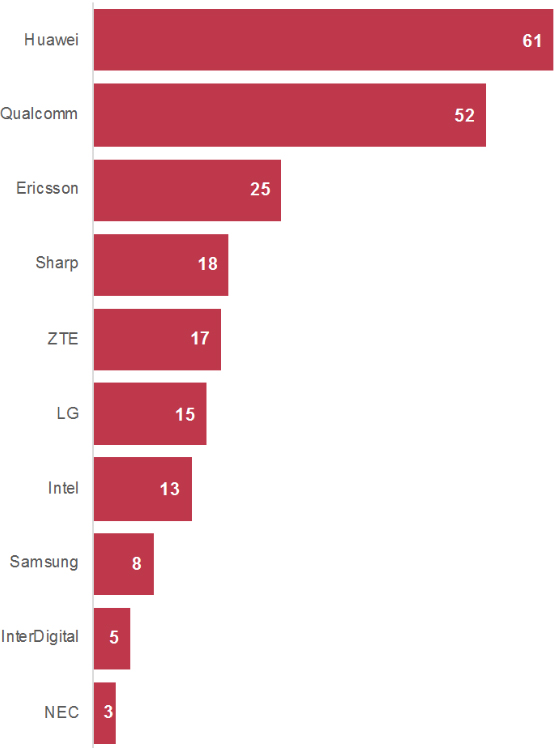
Figure 2 Ranking by the number of ETSI declared NB-IoT SEPs
2. eMTC
eMTC is a LTE-based IoT technology, which has developed from enhanced MTC in Rel-13 to feMTC2 in Rel-14 and then to efeMTC in Rel-15. 18,974 eMTC contributions have been submitted. eMTC research is mainly undertaken by TSG RAN, with 14,641 contributions submitted, followed by TSGs SA (3,128) and CT (1,205). Of RAN TSG working groups, RAN1, RAN2 and RAN4 are relatively important as they have the most participating companies and receive the most contributions; of TSG SA, SA2 receives the most contributions.
eMTC contributions consist mainly of Discussion Papers and Change Requests, accounting for 28% and 37% respectively of the total, while the share of contributions of other types is 35%.
A total of 109 companies participated in the definition of eMTC standards. eMTC contributions submitted by the Top 10 companies in this regard accounted for 78% of the total. Companies that submitted the most eMTC contributions were Ericsson and Huawei, with Ericsson ranking the first given 3,763 contributions submitted and followed by Huawei (2,977) and Nokia (1,958). The Top 10 companies by the number of eMTC contributions submitted also included Qualcomm, Intel, LG, Samsung, ZTE, CATT and Sony in turn.

Figure 3 Distribution of the Top 10 companies by the number of LTE eMTC contributions submitted
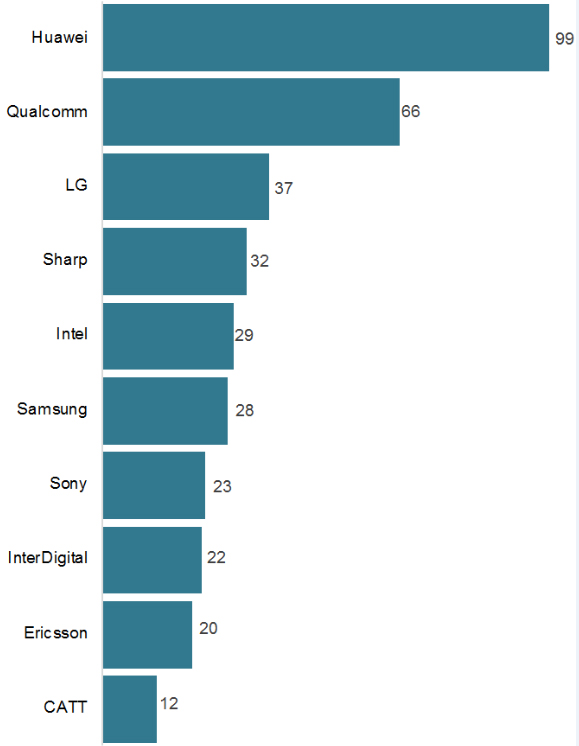
Figure 4 Ranking by the number of ETSI declared eMTC SEPs
eMTC contributions submitted by the Top 10 companies accounted for 78% of the total and these companies were involved in TSGs RAN, SA and CT in different degrees. Ericsson submitted the most contributions to TSGs RAN and SA, but the least to TSG CT; while Huawei submitted the most contributions to TSG CT.
From the perspective of ETSI declared eMTC standard essential patents, as of July 2018, 26 companies declared 450 eMTC SEP families at ETSI.
Of the declared patents, 70% involved 36 series specifications. From the perspective of yearly declarations, companies started the declaration of eMTC SEPs at the inception of the eMTC work item and the number of SEP families declared by companies tended to increase with the advancement of eMTC research by 3GPP, which peaked at 192 in 2017.
eMTC SEP families declared by the Top 10 companies in this regard accounted for 83.7% of the total. Huawei declared the most eMTC standard essential patent families (99), Qualcomm ranked the second (66) in terms of the number of declarations, LG ranked the third (37).
3. LTE-V2X

Figure 5 Distribution of the Top 10 companies by the number of V2X contributions submitted
V2X is an IoT technology regarding vehicles and mainly refers to Vehicle to Everything. It is a new generation of communication technology connecting vehicles to everything, of which V stands for vehicles and X stands for anything interchanging information with vehicles.
The standardization of V2X began in 2015. 3GPP SA set up an SI for V2X requirement research in March 2015. RAN launched V2X SI in June 2015 and completed the research work in June 2016. In December 2015, RAN set up the V2X study item in Rel-14, which focused on LTE-based direct connection and LTE cellular-based communication technologies, and completed Rel-14 in March 2017.
RAN launched the "Rel-14-based V2X enhancement" study item in Rel-15 in March 2017 and completed it in June 2018.
7,050 V2X contributions have been submitted. TSG RAN received the most V2X contributions (5,755), accounting for 81.6%, and was participated by the most companies (68). 37 companies submitted 1,131 V2X contributions to TSG SA and 9 companies submitted 164 V2X contributions to TSG CT. RAN1 was the working group participated by the most companies. Besides, contributions received by this working group accounted for 48% of the total received by TSG RAN.
From the perspective of the type of contributions submitted, Discussion Papers were the most submitted, accounting for 48%, followed by Change Requests (27%) and others (25%).
The Top 10 companies by the number of V2X contributions submitted were world-renowned infrastructure, chip and terminal manufacturers, and contributions submitted by them accounted for 86% of the total. Companies that submitted more than 1,000 V2X contributions included Huawei and LG, with Huawei ranking the first (1,394), followed by LG (1,224) and Ericsson (783). Other Top 10 companies were CATT, Qualcomm, Intel, ZTE, Samsung, Nokia and OPPO in turn.
From the perspective of ETSI declared V2X standard essential patents, as of July 2018, a total of 25 companies declared 750 V2X SEP families at ETSI.
87% of the declared patent families concerned 36 series specifications.
SEP families declared by the Top 10 companies by the number of V2X declarations accounted for 88% of the total, indicating a high concentration, with Chinese declaring companies including Huawei and CATT. From the perspective of declaring companies, as major contributors of V2X standards, both Huawei and LG were active in declaration of V2X patents, with Huawei having declared 227 patent families and ranking No.1; LG having declaring 76 and ranking No.2. Ericsson, Sharp, Qualcomm, Kyocera, CATT, Samsung, Intel and Interdigital declared 31 to 53 patent families.

Figure 6 Ranking by the number of ETSI declared V2X SEPs
Analysis of typical companies
Based on ETSI declared standard essential patents and contributions regarding NB-IoT, eMTC and LTE-V2X, this report chooses six companies with high contributions to NB-IoT, eMTC and V2X for analysis, including Ericsson, Samsung, Huawei, LG, Qualcomm and Nokia. Given their 2015-2017 financial statements, these companies invested heavily in R&D, especially Ericsson, Qualcomm, Huawei and Nokia, which invested over 10% of their revenue in the R&D work; in view of the absolute R&D investment, Samsung and Huawei invested the most in R&D for three consecutive years, with annual investment exceeding or approaching USD 100 billion.
1. Analysis of standard contribution
Table 1 Number of NB-IoT, eMTC and V2X contributions submitted by typical companies and the rankings
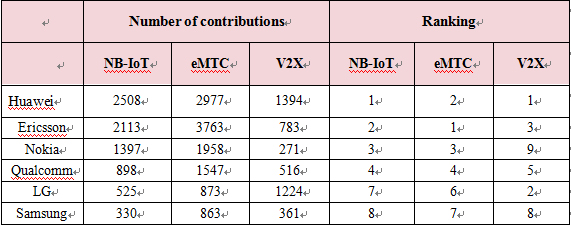
The number of NB-IoT, eMTC and V2X contributions submitted by the six companies and the rankings are listed below:
Based on contributions made by different companies in terms of NB-IoT, eMTC and V2X contributions, Huawei and Ericsson made the most contributions.
Huawei ranked No.1 by the number of both NB-IoT and V2X standard contributions, while eMTC ranked No.2. Huawei undertook 12 rapporteurs for V2X and five rapporteurs for NB-IoT, and played a key role in promoting V2X and NB-IoT standards.
Ericsson ranked No.1 by the involvement in eMTC standards and the number of eMTC contributions, No.2 for NB-IoT and No.3 for LTE-V2X. Ericsson, as a main driver of eMTC standards, undertook six rapporteurs for eMTC. Apart from contributions submitted to TSGs RAN, SA and CT, Ericsson made remarkable contributions in terms of contributions submitted to RAN4 and RAN5, which submitted 503 contributions to RAN5, accounting for 43% of the total submitted to RAN5.
LG focused on V2X and was less involved in NBIoT and eMTC. LG undertook 15 rapporteurs and played a key role in promoting V2X standards. Nokia emphatically participated in the research on eMTC and NB-IoT standards and invested little in LTEV2X. Qualcomm invested evenly in the three IoT technologies, which was mid-ranking.

Figure 7 Comparison of typical companies’ contributions in NB-IoT, eMTC and LTE-V2X
2.Analysis of ETSI declared standard essential patents
Table 2 Number of NB-IoT, eMTC and V2X SEPs declared by typical companies and the rankings
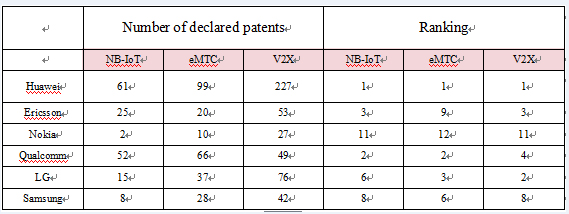
The number of NB-IoT, eMTC and V2X patents declared by the six companies and the rankings are shown in the table below:
From the perspective of ETSI declared SEPs of the six companies, Huawei was the most active in the declaration of NB-IoT, eMTC and V2X patents, and ranked No.1 by the number of declared patents regarding the three technologies, which was consistent with the case of contributions submitted by Huawei in these regards. Relative to its contribution to 3GPP contributions, Qualcomm was more active in patent declaration and ranked No.2 by the number of declared NB-IoT and eMTC patents and No.4 by the number of declared V2X patents. Ericsson declared more NB-IoT and V2X patents than eMTC patents, which was in stark contrast to the fact that it submitted the most eMTC contributions. LG declared the most V2X patents, basically consistent with its contribution to 3GPP contributions, and was more active in the declaration of NB-IoT and eMTC patents than its involvement in 3GPP contributions. Samsung was more active in patent declaration while Nokia declared the least NB-IoT, eMTC and V2X patents.
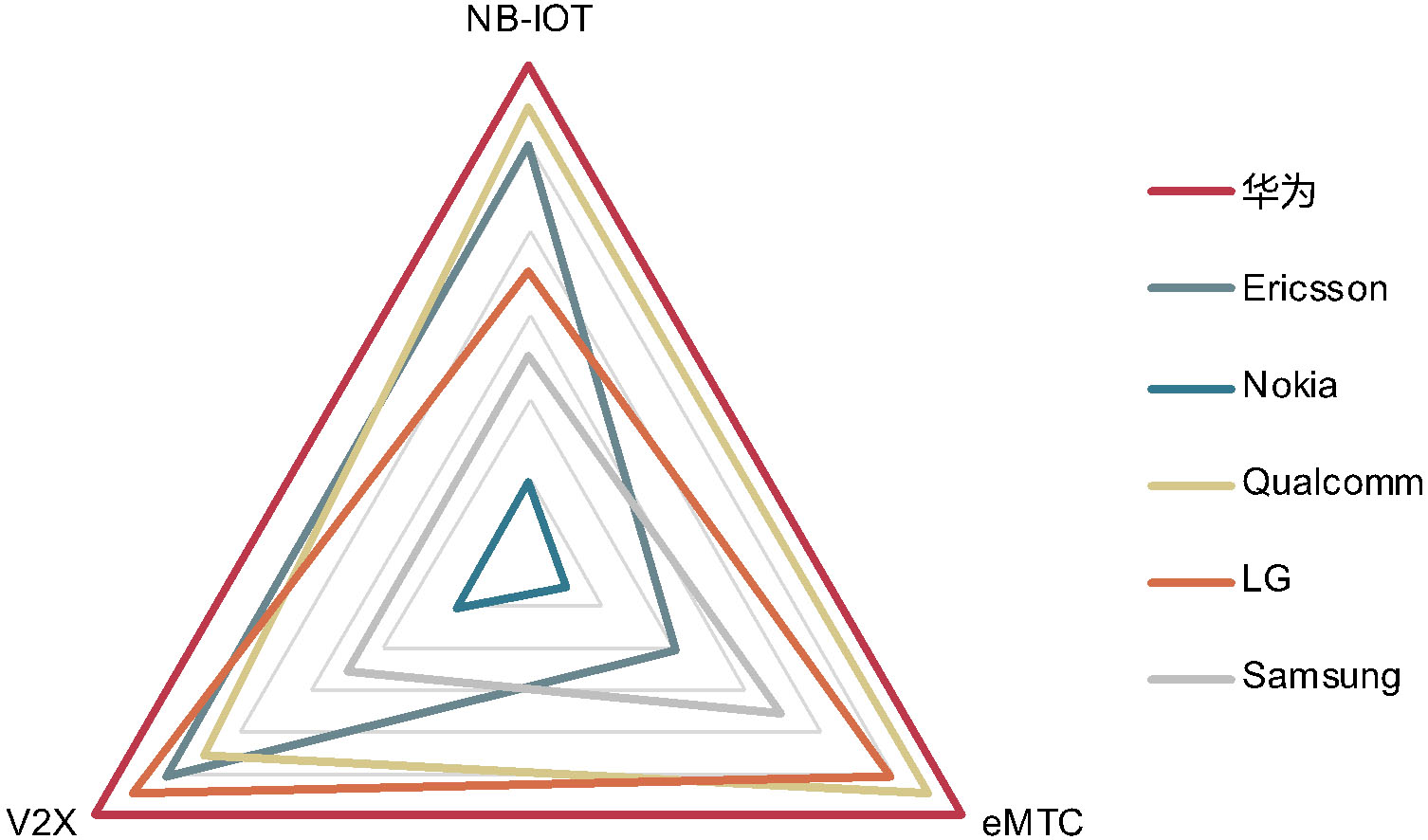
Figure 8 Comparison among typical companies in declared NB-IoT, eMTC and V2X SEPs
Conclusion
As of September 2018, a total of 37,703 effective NB-IoT, eMTC and LTE-V2X contributions were submitted for 3GPP RAN, SA and CT SIs and WIs. To break it down, eMTC and NB-IoT were discussed for a longer period in 3GPP, with more contributions, including 18,974 eMTC contributions and 11,679 NBIoT contributions; LTE-V2X research started later, with 7,050 contributions.
From the perspective of SEP declarations, there were 222, 450 and 750 NB-IoT, eMTC and LTE-V2X patent families declared at ETSI respectively.
Companies participate in NB-IoT, eMTC and LTE-V2X mainly include Huawei, Ericsson, LG, Qualcomm, Nokia, Samsung, ZTE and CATT. From the perspective of key companies in different fields of technology, in the field of NB-IoT, Huawei is leading the pack in terms of the number of contributions and declared patents, while Qualcomm and Ericsson also fall into the first camp. In the field of eMTC, Ericsson takes the lead in the number of contributions while Huawei dominates in the number of declared patents, and companies such as Qualcomm and LG also fall into the first camp. In the field of LTE-V2X, Huawei tops the list for the number of both patents and contributions, followed by LG, Ericsson, Qualcomm and Nokia.
(Contribution data retrived from 3GPP, SEP declaration data retrieved from ETSI.)
|
Copyright © 2003-2018 China Intellectual Property Magazine,All rights Reserved . www.chinaipmagazine.com 京ICP备09051062号 |
|
|



